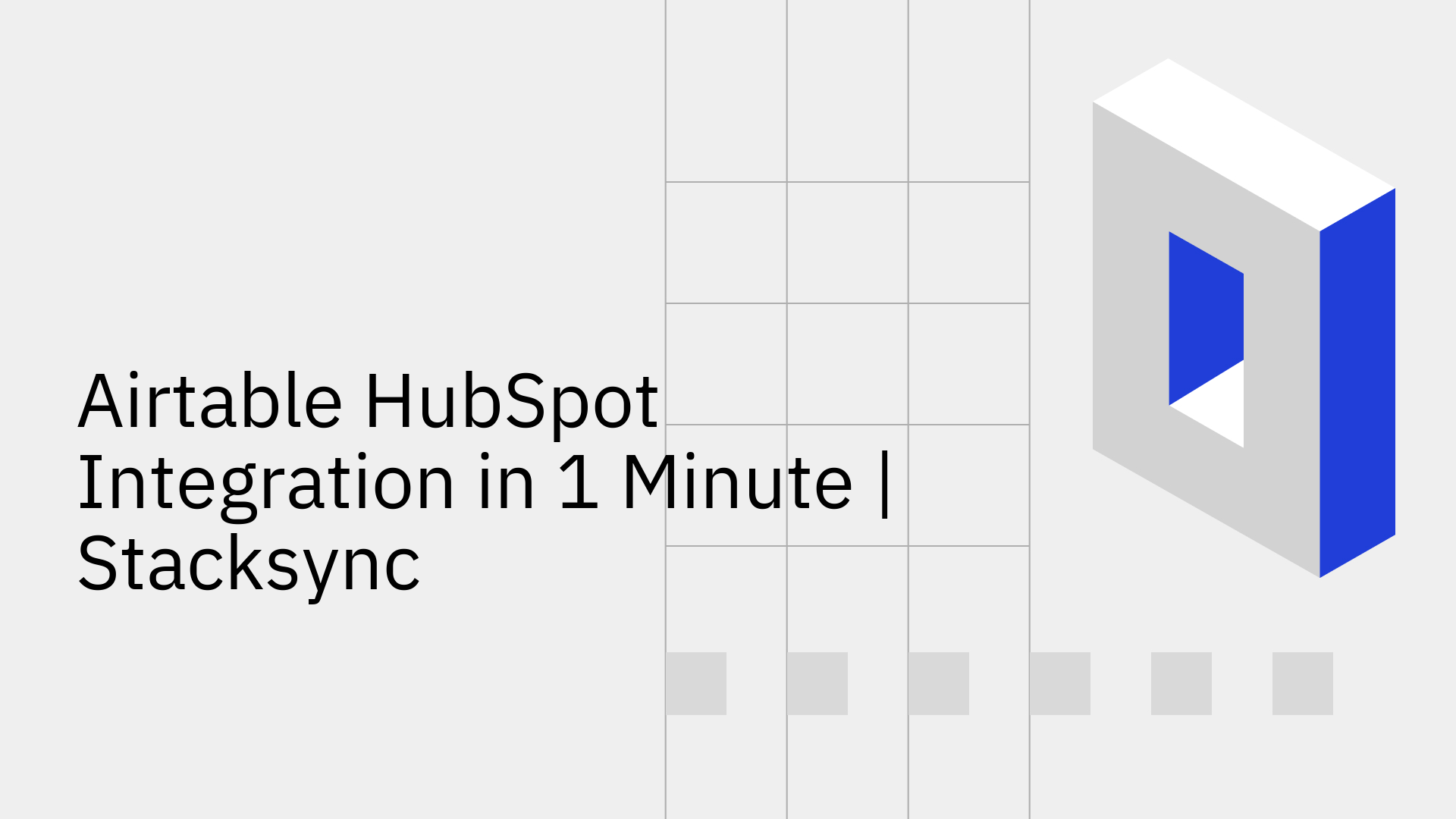Synchronizing CRM and project tracking systems is a critical challenge for modern businesses. When HubSpot and Airtable run separately, teams face data silos, duplicated effort, and missed opportunities. Stacksync solves this with real-time, two-way sync, eliminating manual updates and ensuring every department works with accurate, up-to-the-minute information.
What Makes Stacksync Different
- Seamless Data Flow: Real-time, two-way sync keeps Airtable and HubSpot aligned.
- Boosted Efficiency: Automated transfers eliminate manual entry.
- Strategic Decision-Making: Harmonized data empowers faster, smarter responses.
- Reduced Overhead: Cuts down on custom engineering maintenance.
Achieving true real-time consistency means better operations and stronger decisions.
Why Integrate Airtable with HubSpot?
- Break Down Silos: Sales and marketing share one source of truth.
- Minimize Manual Entry: Closed-Won deals create Airtable records automatically.
- Support Real-Time Decisions: Scope changes in Airtable update HubSpot deals instantly.
- Boost Operational Efficiency: CRM and projects stay aligned, driving smooth workflows.
Method 1: Integration Using Stacksync
Stacksync delivers enterprise-grade two-way sync, recognized as a leader in real-time integration.
Step-by-Step Implementation
- Set Up Airtable: Authenticate, select bases, map fields.
- Integrate HubSpot: Connect via OAuth, choose objects, enable two-way sync.
- Map Data Relationships: Align fields, associations, and set conflict rules.
- Activate Real-Time Sync: Sub-second updates, workflows, and monitoring.
Technical Advantages
- True Bi-Directional: Instant reflection of updates.
- Field-Level Change Detection.
- Enterprise Security (SOC2, GDPR, HIPAA, ISO 27001).
- Scalable Architecture: Handles millions of records (market $47.6B by 2034).
- Reduced Overhead: Avoid $3.5M custom integration costs, freeing 39% of IT time.
Method 2: Alternative Approaches
- Zapier: Useful for small tasks but limited by 1–15 min delays, one-way sync, and scaling costs.
- HubSpot Operations Hub: Convenient but primarily one-way with restricted mapping and scaling issues.
Operational Benefits
- Enhanced Consistency: Deals in HubSpot update as Airtable statuses change.
- Reduced Overhead: No-code setup frees dev resources.
- Improved Workflow Efficiency: Automated flows replace manual processes.
- Scalable Performance: Sub-second sync at enterprise scale.
Example Field Mapping
Airtable FieldHubSpot PropertyAirtable TypeHubSpot TypeProject NameDeal NameTextTextClient EmailEmailEmailEmailProject StatusDeal StageSingle selectStageLaunch DateClose DateDateDate
Quick Implementation Guide
- Sign up for Stacksync’s 14-day trial.
- Connect Airtable + HubSpot.
- Define objects and tables.
- Map fields.
- Activate real-time two-way sync.
Checklist: true bi-directional sync, real-time performance, scalability, field-level detection, enterprise security, ease of management.
Conclusion
Effective Airtable-HubSpot integration requires true real-time, two-way sync. Stacksync delivers enterprise-grade architecture that removes manual processes, reduces overhead, and empowers teams to act on consistent data instantly. With the global market projected to exceed $47.6B by 2034, now is the time to invest in scalable, secure integration.
Key Terms Explained
- Airtable: Hybrid database + spreadsheet for project tracking.
- HubSpot: CRM platform for sales, marketing, and service.
- Bi-directional Sync: Data moves automatically both ways.
- CRM: Software for managing customer relationships.
- Data Silos: Isolated data inaccessible to other teams.
- Real-time Sync: Updates appear instantly across systems.
- What You Need: Active Airtable + HubSpot accounts, API or admin permissions.
FAQ: Airtable HubSpot Integration
1. How long does it take to set up Airtable-HubSpot integration with Stacksync?
Most teams can connect Airtable and HubSpot, map fields, and activate real-time sync in under 10 minutes. Complex setups with custom objects may take a few hours.
2. Does Stacksync support true two-way synchronization?
Yes. Unlike tools that only replicate one-way, Stacksync ensures real-time, bi-directional updates with conflict resolution at the field level.
3. What permissions are required to integrate Airtable with HubSpot?
You’ll need admin or API access for both platforms to authenticate connections and configure field mappings.
4. Can Stacksync handle large datasets between Airtable and HubSpot?
Absolutely. The platform scales from thousands to millions of records with sub-second latency, supported by enterprise-grade architecture.
5. Is the integration secure and compliant?
Yes. Stacksync is compliant with SOC 2 Type II, GDPR, HIPAA BAA, and ISO 27001, ensuring enterprise-level data protection.
